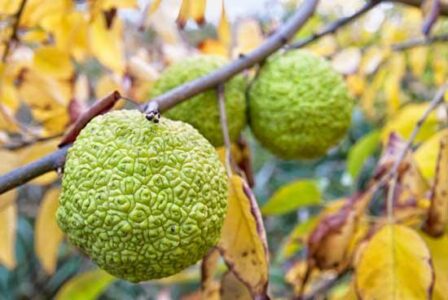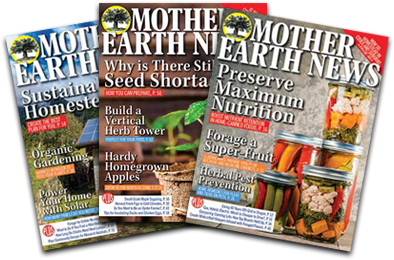One of the most useful trees that grows on our place is the Osage orange (Maclura pomifera), which here in Kansas is generally called “hedge” or “hedge apple.” The hedge tree, once in high demand by the railroads for its dense, decay-resistant wood, was nearly harvested to extinction to supply crossties. Before that, Native American folks found that its wood made fine bows — and indeed these bows were part of Native American trade activities well before European contact. Fast-forward to westward colonization in what’s now the United States, and you’ll discover that the hedge apple was valued by early European agrarians as a living fence — a closely spaced row of the thorny trees could indeed create a hog-tight fence.
Our farm was homesteaded in 1902, and among many other “improvements,” the early settlers planted rows of hedge trees to mark boundaries between fields, and perhaps to form fences.
About 60 years later, many of those hedge trees were cut down to create fence posts that supported the farm’s second owner’s wire fences. Many of those posts are still in service — although even more of them need to be replaced after more than 55 years of untreated soil contact. And so I replace them when needed with posts I cut from the many coppiced hedge stools that resprouted from the first harvest. Imagine my delight when I encountered what appeared to be a 100-year-old stump from which nine or more straight, 8-inch-diameter trunks were growing — a post harvester’s dream, if there ever was one.
Hedge has another function on our place — heat. We relish the wood’s Btu density and ease of splitting when wet, even if it’s sufficiently hard to make the chainsaw chains spark from time to time. We also use chunks of the wood in our grill and smoker — homemade charcoal can’t be beat when it comes to outdoor cooking. Hedge sparks and pops too much for some folks to feel comfortable burning it. We love the fireworks that emanate from within our heating stove about as much as we love the heat. I also like to use hedge wood to make handles for knives I create. Some folks even harvest the hedge fruit, much like mammoths did back in the day. But rather than eat them, we use them to repel insects and spiders in the house, and even as a source of some compounds with medicinal value.
The affection that I feel for the Osage orange is related to both its history and versatility. We can use it thoroughly as a renewable resource — at least in my part of the world. If you’ve discovered any great resources around your place that help make your life richer, more possible, or at least more enjoyable, I’d love to learn about them.
Please send me an email at HWill@MotherEarthNews.com — send photos too, if you can — and we may be able to get some of your renewable resources into a future issue.
See you in April,
Hank




